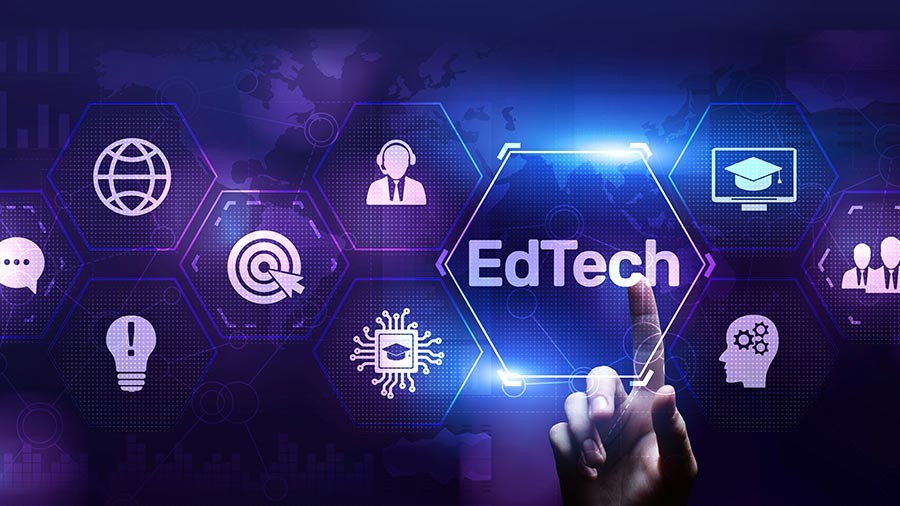Inquiry Form


In the 21st century, education is undergoing a profound transformation with the integration of technology, commonly referred to as Educational Technology or EdTech. The traditional classroom, once characterized by chalkboards and textbooks, is evolving into a dynamic, tech-infused environment. This blog explores the transformative power of EdTech in enhancing classroom experiences, examining the benefits, challenges, and the future trajectory of technology in education.
Educational Technology encompasses a wide array of digital tools, platforms, and resources designed to enhance the teaching and learning process. The adoption of EdTech has gained momentum globally, driven by the recognition of its potential to address educational challenges, cater to diverse learning styles, and prepare students for the demands of the digital age.
EdTech allows for personalized learning experiences tailored to individual student needs. Adaptive learning platforms, intelligent tutoring systems, and educational apps can assess a student's strengths and weaknesses, providing customized content and pacing to optimize their learning journey.
Interactive and multimedia-rich content captivates students' attention and enhances engagement. EdTech tools, such as educational games, simulations, and virtual reality, transform abstract concepts into tangible, interactive experiences, making learning more enjoyable and memorable.
Technology has the power to break down geographical and physical barriers. EdTech tools enable remote learning, providing access to educational resources for students in various locations. Additionally, technology can accommodate diverse learning styles, making education more inclusive for students with different needs and abilities.
Digital assessment tools and learning management systems offer real-time feedback to both students and educators. This immediate feedback loop allows for timely intervention, helping students address misconceptions, refine their understanding, and track their progress more effectively.
EdTech fosters collaboration and communication among students and educators. Virtual classrooms, collaborative online platforms, and communication tools facilitate interaction, discussion, and project-based learning, creating a more connected and interactive learning community.
LMS platforms, such as Moodle, Canvas, and Blackboard, provide a centralized hub for course materials, assignments, assessments, and communication. These systems streamline the organization of educational content and facilitate online collaboration.
Educational apps cover a wide range of subjects and skills, offering interactive lessons, quizzes, and games. Apps like Duolingo for language learning or Khan Academy for mathematics provide supplementary resources to reinforce classroom concepts.
VR and AR technologies create immersive learning experiences. They transport students to virtual environments or overlay digital information onto the real world, enhancing understanding in subjects like history, science, and geography.
Interactive whiteboards, such as SMART Boards, promote dynamic and collaborative learning. They allow teachers to create interactive lessons, annotate content in real-time, and encourage student participation.
Tools like Kahoot! and Quizizz gamify the learning experience by turning assessments into interactive games. These platforms not only assess knowledge but also make the process enjoyable for students.
The digital divide remains a significant challenge, with disparities in access to technology and the internet. Students in underserved communities may lack the devices or reliable connectivity needed to fully benefit from EdTech tools, exacerbating educational inequalities.
Implementing EdTech effectively requires educators to be proficient in using these tools. Adequate training and ongoing support are essential to empower teachers to integrate technology seamlessly into their teaching practices.
The collection and storage of student data raise concerns about privacy and security. Educational institutions and EdTech providers must prioritize robust data protection measures to safeguard sensitive information and comply with privacy regulations.
Striking a balance between traditional teaching methods and EdTech is crucial. Overreliance on technology may undermine essential aspects of education, such as human connection, critical thinking, and creativity.
AI is poised to play a pivotal role in the future of EdTech. AI-driven applications can provide personalized learning experiences, automate administrative tasks, and offer intelligent tutoring systems that adapt to individual student needs.
Blockchain technology has the power to completely transform verification and credentialing procedures. Employers and educational institutions can streamline the verification process by utilizing blockchain technology in academic records, which guarantees the security and legitimacy of educational credentials
AR and VR technologies will continue to evolve, offering increasingly sophisticated and realistic learning experiences. These technologies will likely become more integrated into curriculum development, providing students with immersive educational journeys.
EdTech will facilitate more extensive collaboration among students and educators globally. Virtual classrooms, online projects, and international collaborations will become more prevalent, providing students with a broader perspective on global issues and diverse cultures.
EdTech is undeniably reshaping the landscape of education, offering unprecedented opportunities
to enhance classroom experiences. From personalized learning and interactive content to global
collaboration and cutting-edge technologies, the potential of EdTech is vast. However,
addressing challenges related to accessibility, teacher training, and privacy remains crucial to
ensure that the benefits of EdTech are accessible to all.
As we navigate the future of education, a thoughtful and inclusive approach to EdTech
integration is paramount. By leveraging technology to complement traditional teaching methods,
fostering collaboration, and prioritizing equitable access, we can harness the full power of
EdTech to create